The Archaeology and Material Culture of Queenship in Medieval Hungary, 1000–1395
1st Edition
Christopher Mielke
Visit to download the full and correct content document: https://ebookmass.com/product/the-archaeology-and-material-culture-of-queenship-in -medieval-hungary-1000-1395-1st-edition-christopher-mielke/
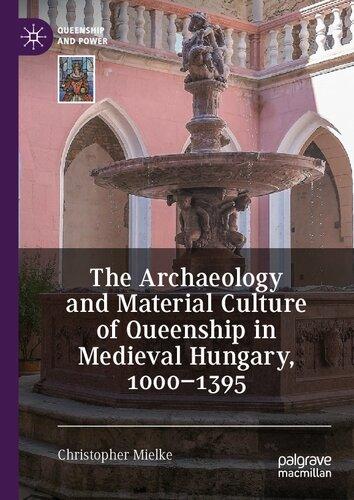
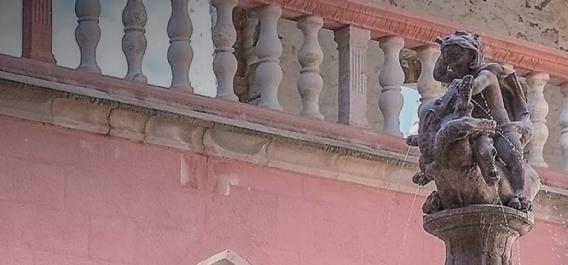

The
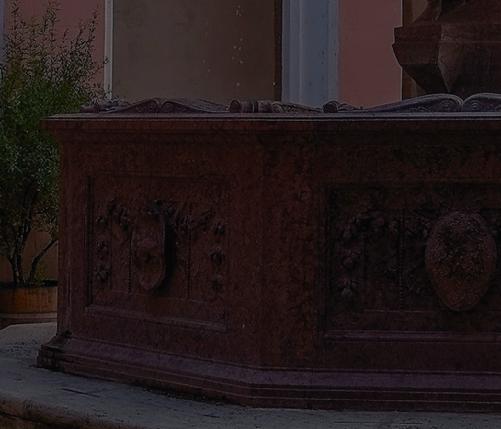
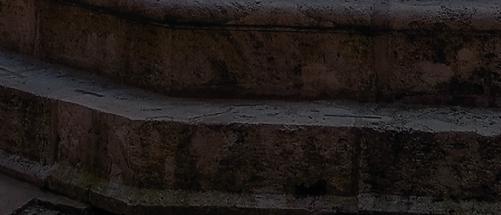
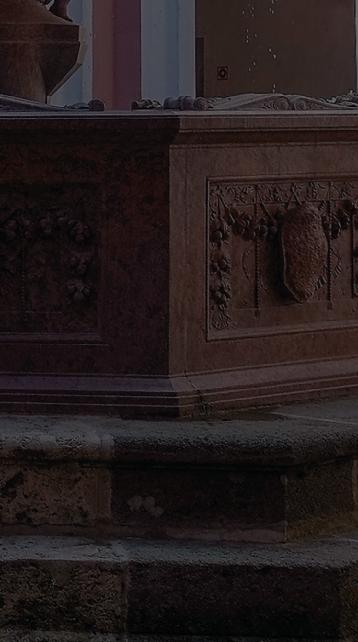
 Christopher Mielke
Archaeology and Material Culture of Queenship in Medieval Hungary, 1000–1395
Christopher Mielke
Archaeology and Material Culture of Queenship in Medieval Hungary, 1000–1395
QueenshipandPower
SeriesEditors
CharlesE.Beem,UniversityofNorthCarolina,Pembroke, NC,USA
CaroleLevin,UniversityofNebraska,Lincoln,NE,USA
Thisseriesfocusesonworksspecializingingenderanalysis,women’s studies,literaryinterpretation,andcultural,political,constitutional,and diplomatichistory.Itaimstobroadenourunderstandingofthestrategiesthatqueens—bothconsortsandregnants,aswellasfemaleregents— pursuedinordertowieldpoliticalpowerwithinthestructuresofmaledominantsocieties.TheworksdescribequeenshipinEuropeaswellas manyotherpartsoftheworld,includingEastAsia,Sub-SaharanAfrica, andIslamiccivilization.
Moreinformationaboutthisseriesat
http://www.palgrave.com/gp/series/14523
ChristopherMielke
TheArchaeology andMaterialCulture ofQueenship inMedievalHungary, 1000–1395
ChristopherMielke
Beverly,WV,USA
ISSN2730-938XISSN2730-9398(electronic)
QueenshipandPower
ISBN978-3-030-66510-4ISBN978-3-030-66511-1(eBook)
https://doi.org/10.1007/978-3-030-66511-1
©TheEditor(s)(ifapplicable)andTheAuthor(s),underexclusivelicensetoSpringer NatureSwitzerlandAG2021
Thisworkissubjecttocopyright.Allrightsaresolelyandexclusivelylicensedbythe Publisher,whetherthewholeorpartofthematerialisconcerned,specificallytherights oftranslation,reprinting,reuseofillustrations,recitation,broadcasting,reproductionon microfilmsorinanyotherphysicalway,andtransmissionorinformationstorageand retrieval,electronicadaptation,computersoftware,orbysimilarordissimilarmethodology nowknownorhereafterdeveloped.
Theuseofgeneraldescriptivenames,registerednames,trademarks,servicemarks,etc. inthispublicationdoesnotimply,evenintheabsenceofaspecificstatement,thatsuch namesareexemptfromtherelevantprotectivelawsandregulationsandthereforefreefor generaluse.
Thepublisher,theauthorsandtheeditorsaresafetoassumethattheadviceandinformationinthisbookarebelievedtobetrueandaccurateatthedateofpublication.Neither thepublishernortheauthorsortheeditorsgiveawarranty,expressedorimplied,with respecttothematerialcontainedhereinorforanyerrorsoromissionsthatmayhavebeen made.Thepublisherremainsneutralwithregardtojurisdictionalclaimsinpublishedmaps andinstitutionalaffiliations.
Covercredit:RolfRichardson/AlamyStockPhoto
ThisPalgraveMacmillanimprintispublishedbytheregisteredcompanySpringerNature SwitzerlandAG
Theregisteredcompanyaddressis:Gewerbestrasse11,6330Cham,Switzerland
FormyMother,Elizabeth.
Myinterestincleverwomenovercomingadversityisinspiredbybearing witnesstoyoursuccessinthesame.
Acknowledgments
Thisworkwouldnothavebeenpossiblewithoutmyfamily,friends, colleagues,advisers,andinstitutionalpartners.Tostart,Iwouldexpressly liketothankCentralEuropeanUniversity’sDepartmentofMedieval Studiesfortheirsupportthroughoutthisentireventure—Idonotthink thisworkcouldhavebeendoneanyotherplace.Iwouldalsoliketo expressthankstotheAmericanResearchCenterinSofia,theERASMUS program,andtheGermanAcademicExchangeService(DAAD)fortheir supportwhiledoingthisresearchaspartofmydoctoraldissertation.I amalsogratefultotheMedievalAcademyofAmerica—theirawardofthe CharlesT.WoodDissertationGrantin2015allowedmetodonecessary fieldworkforthisstudy.
MyspecialthanksaretoJózsefLaszlovszkyandAliceChoykefortheir workinsupervisingthiswork.Iamalsogratefultomyotheradvisers, suchasJánosBak,KatalinSzende,GáborKlaniczay,GerhardJaritz,Béla ZsoltSzakács,RobertaGilchrist,AleksPluskowski,andmanyothers.
Foraidinginthetransitionfromdissertationtomonograph,Iwould liketothankmyfriendsandcolleagueswhohelpedwiththetranslations andcopyediting.ZsuzsannaEke,BarbaraLitzlfellner,MagdalenaDebna, andSvetlanaTsonkovaallprovidednecessarydoublecheckingandtranslationhelpforworksIconsultedinHungarian,German,Polish,and Russian,respectively.MyfriendsJustinHagerandJosephSherrenhelped reviewsomeofthechaptersaftertheywereassembledintoabookform withtheaimoftryingtomakethismorereadable.
vii
Iwouldfinallyliketothankmyfamily—myparentsLisaandTom Mielke,mygrandmotherMarilynKinsey,mysisterJenniferLinhartWood, andherhusbandBryanTalenfeld.Theirlove,support,andkindnessmade thisworkpossibleduringthemanytimesIthoughtitwassomething insurmountable.
viii ACKNOWLEDGMENTS
Contents 1Introduction 1 2TheBeginningsoftheHungarian‘Queendom’(c. 1000–1090) 27 3StonesandBonesandtheQueensoftheTwelfth Century(1097–1193) 71 4The“Office”oftheQueenBegins(1172–1233) 91 5TheSecondFoundresses(1235–1295) 133 6LongWidowhoods(1296–1380) 171 7RegentandRegnant(1370–1395) 225 8Conclusions 263 Bibliography 269 Index 307 ix
ListofFigures
Fig.1.1ThedeathofPrinceEmericandtheblindingofVazul. The HungarianIlluminatedChronicle ,National SzéchényiLibrary,Budapest,Cod.Lat.4045
Fig.2.1TheÁrpáddynastyintheeleventhcentury29
Fig.2.2TheBirthofSt.StephenThe HungarianIlluminated Chronicle ,NationalSzéchényiLibrary,Budapest,Cod. Lat.40431
Fig.2.3TheGiselaCross,ca.1006.Schatzkammer,Munich Residenz37
Fig.2.4St.StephenIandGiselafoundingtheCathedralofSS PeterandPaulinÓbuda.The HungarianIlluminated Chronicle ,NationalSzéchényiLibrary,Budapest,Cod. Lat.40441
Fig.2.5ModernmonumenttoGiselabasedonher eleventh-centurytombstone45
Fig.2.6GravestoneofTutaofFormbach,AbbeyofSuben48
Fig.2.7TheHolyCrownofHungary,eleventh-centurytotwelfth century60
Fig.2.8TheAdelaideCross,front,ca.1080s(Source StiftSankt PaulamLavanttal.©FotoStiftSt.Paul,GerfriedSitar)65
Fig.3.1TheÁrpáddynastyinthetwelfthcentury72
Fig.3.2TheCouncilofArad.The HungarianIlluminated Chronicle ,NationalSzéchényiLibrary,Budapest,Cod. Lat.40483
xi
Fig.3.3AgnesofBabenbergintheBabenbergerStammbaum attheStiftsmuseumKlosterneuburg(Photograph byIMAREALKrems)89
Fig.4.1TheÁrpáddynastyinthethirteenthcentury93
Fig.4.2CrownofAnnaofAntioch.HungarianNationalMuseum95
Fig.4.3ClothingfragmentsfromthetombofAnnaofAntioch. FromGyulaForster, III.Bélamagyarkirályemlékezete (1900)98
Fig.4.4RingofAnnaofAntioch.HungarianNationalMuseum100
Fig.4.5ThebetrothalofMargarettoBélaIIIofHungary. GrandesChroniquesdeFrance,BritishLibrary,Royal16 GVI,f.341106
Fig.4.6TheElisabethkleid.AndechsAbbey117
Fig.4.7TheAndechsfamilyintheHedwigCodex(DigitalImage CourtesyofGetty’sOpenContentProgram)120
Fig.4.8SealofYolandaofCourtenay,drawingbytheauthor126
Fig.4.9CoinageofAndrewIIfeaturingYolanda.From LászlóRéthy, CorpusNummorumHungariae (1899–1907)127
Fig.5.1SealofMariaLaskarina.HungarianNationalArchives, OLDF686136
Fig.5.2CoinageofBélaIVfeaturingMariaLaskarina. FromLászlóRéthy, CorpusNummorumHungariae (1899–1907)137
Fig.5.3BélaIVandMariaLaskarinacrowningStephenV.The HungarianIlluminatedChronicle ,NationalSzéchényi Library,Budapest,Cod.Lat.404145
Fig.5.4FirstSealofElizabeththeCuman.FromSándorSzilágyi, AMagyarNemzetTörténete (1895)147
Fig.5.5SecondsealofElizabeththeCuman.HungarianNational Archives,OLDF63612148
Fig.5.6CoinageofLadislasfeaturingElizabeththeCuman. FromLászlóRéthy, CorpusNummorumHungariae (1899–1907)150
Fig.5.7BurialCrownfromMargaretIsland.HungarianNational Museum.1847.43.a152
Fig.5.8SecondSealofIsabellaofNaples.HungarianNational Archives,OLDF1119160
Fig.5.9SealofFenennaofKujavia.IllustrationfromGyörgyPray, Syntagmahistoricumdesigillisregum,etreginarum Hungariae (1805)166
xii LISTOFFIGURES
Fig.6.1TheHungarianAngevinDynastyinthefourteenth century173
Fig.6.2FirstsealofAgnesHabsburg.DrawingbyNándor Malachovsky,fromSándorSzilágyi, AMagyarNemzet Története (1895)175
Fig.6.3LostwindowofAgnesofHabsburg.FromMartin Gerbert, MonumentaAugustaeDomusAustriacae (1772)179
Fig.6.4InsidecoverofthePrayersandBenedictionsofMuri. SarnenBenediktinerkollegium,CodexMS.69185
Fig.6.5CryptatKönigsfelden.FromMartinGerbert, Monumenta AugustaeDomusAustriacae (1772)188
Fig.6.6SealofMariaofBytom.HungarianNationalArchives, OLDF1814191
Fig.6.7TheburialofMariaofBytom. TheHungarian IlluminatedChronicle ,NationalSzéchényiLibrary, Budapest,Cod.Lat.404194
Fig.6.8ThebetrothalofElizabethofPoland. TheHungarian IlluminatedChronicle ,NationalSzéchényiLibrary, Budapest,Cod.Lat.404195
Fig.6.93illustrationsofthelifeofElizabethofPoland. The HungarianIlluminatedChronicle ,NationalSzéchényi Library,Budapest,Cod.Lat.404197
Fig.6.10TheattemptonthelifeofthekingandqueenbyFelician Záh. TheHungarianIlluminatedChronicle ,National SzéchényiLibrary,Budapest,Cod.Lat.404198
Fig.6.11GreatsealofElizabethofPoland.HungarianNational Archives,OLDF3137200
Fig.6.12CoinageofCharlesIRobertfeaturingElizabeth ofPolandandherinitials.FromLászlóRéthy, Corpus NummorumHungariae (1899–1907)202
Fig.6.13ReliquaryaltarownedbyElizabethofPoland.The CloistersCollection,1962.62.96206
Fig.6.14DrawingofthecapitalfromSt.MaryGateattheChurch ofOurLadyinBudafeaturingElizabethofPoland. DrawingbyJosefKeintzel,1876.FromJózsefCsemegi, Abudavárif˝otemplomközépkoriépítéstörténete (1955)212
Fig.7.1GreatsealofElizabethofBosnia.FromGyörgyPray, Syntagmahistoricumdesigillisregum,etreginarum Hungariae (1805)228
Fig.7.2ReliquarySarcophagusofSt.Simeon,Zadar230
LISTOFFIGURES xiii
Fig.7.3PossibleformerroodscreenfeaturingLouisIofHungary andElizabethofBosnia.DrawingfromSándorMárki, MáriaMagyarországkirálynéja1370 –1395 ,(1885)236
Fig.7.4GreatsealofQueenMary.FromGyörgyPray, Syntagma historicumdesigillisregum,etreginarumHungariae (1805)242
Fig.7.5ThirdSignetRingofQueenMary.FromGyörgyPray, Syntagmahistoricumdesigillisregum,etreginarum Hungariae (1805)245
Fig.7.6CoinageissuedbyQueenMary.FromLászlóRéthy, CorpusNummorumHungariae (1899–1907)247
Fig.7.7OrbfoundinroyaltombatOradea.HungarianNational Museum.1934.415.b251
Fig.7.8TheFlorianPsalter,folio53v,c.1395–1405.National LibraryofPoland256
xiv LISTOFFIGURES
AListofQueensIncludedinthisStudy
QueenLifeandDeathConsort
Saroltaof Transylvania (d.1008?)PrinceGéza(r.975–997)
GiselaofBavaria(c.985–1065)St.StephenI(r.997–1038)
TutaofFormbach(d.1055?)PeterOrseolo? (r.1038–1041/1044–1046)
N.N.ofHungary(d.?)SamuelAba(r.1041–1044)
Adelaideof Brunswick (1022–1048/49)AndrewI(r.1046–1060)
AnastasiaofKiev(d.1096?)AndrewI(r.1046–1060)
RichezaofPoland(d.?)BélaI(r.1060–1063)
JudithofSwabia(1047–1094?)Salomon(r.1063–1074)
SynadeneSynadenos(d.after1079/1080)GézaI(r.1074–1077)
Adelaideof Rheinfelden (d.1090)St.LadislasI(r.1077–1095)
FeliciaofSicily(d.before1112)Coloman(r.1095–1116)
EuphemiaofKiev(d.1138)Coloman(r.1095–1116)
N.N.OfCapua(d.?)StephenII(r.1116–1131)
Adelaideof Regensburg (d.?)StephenII?(r.1116–1131)
HelenofSerbia(d.1146?)BélaII(r.1131–1141)
EuphrosyneofKiev(1130?–1193?)GézaII(r.1141–1161)
AgnesofBabenberg(1154–1182)StephenIII(r.1161–1173)
MariaKomnene(d.?)StephenIV(r.1163–1165)
Anna(Agnes)of Antioch (d.1184)BélaIII(r.1173–1196)
(continued) xv
(continued)
QueenLifeandDeathConsort
MargaretofFrance(1158–1197)BélaIII(r.1173–1196)
Constanceof
Aragon (1179–1222)Emeric(r.1196–1204)
Gertrudeof
Andechs-Meran (d.1213)AndrewII(r.1205–1235)
Yolandaof
Courtenay (d.1233)AndrewII(r.1205–1235)
BeatriceofEste(d.1245)AndrewII(r.1205–1235)
MariaLaskarina(d.1270)BélaIV(r.1235–1270)
Elizabeththe
Cuman (d.1290?)StephenV(r.1270–1272)
IsabellaofNaples(d.1303)LadislasIV(r.1272–1290)
FenennaofKujavia(1276–1295)AndrewIII(r.1290–1301)
AgnesofHabsburg(1281–1364)AndrewIII(r.1290–1301)
MariaofBytom(d.1317)CharlesIRobert (r.1308–1342)
Beatriceof Luxemburg (d.1319)CharlesIRobert (r.1308–1342)
ElizabethofPoland(d.1380)CharlesIRobert (r.1308–1342)
Margaretof Luxemburg (d.1349)LouisI(r.1342–1382)
ElizabethofBosnia(d.1387)LouisI(r.1342–1382)
Maryb.1370(r.1382–1395)SigismundofLuxemburg (r.1387–1437)
xvi
ALISTOFQUEENSINCLUDEDINTHISSTUDY

Introduction
ThisbookaimstodocumenthowmedievalqueensintheHungarian kingdomusedmaterialcultureandstructuredspaceasexpressionsof theirownpower.Thelivesoftwenty-sevenwomenarepresentedherein ordertounderstandhowtheyusedobjects,images,andspaceintermsof theirownagencyandcapacityforaction.Thisconcernfortheindividual experienceisatrickyoneasreconstructingindividuallivesthrough materialcultureisextremelydifficultandinsomecasesimpossible. MostHungarianqueenshavebeenunderstoodonlythroughwritten evidence—charters,chronicles,hagiography,etc.Thepastmillenniumof Hungarianhistoryhasbeenwaveafterwaveofdestructionandmostof themedievalarchivesareinanincrediblyfragmentarystate;theyshould notbetakenasthefinalwordontheagencyofthemedievalqueens. Thisdestructionalsoappliestothematerialcultureandspacesofthe queens,butthefew,fortunatesurvivalsareworthyofinvestigationin theirownright.
Thisworksaimstounderstandwhothesewomenwereandhowthey expressedtheirpowerthroughover150objects,images,andspaces.In ordertounderstandthecontextthattheseobjectsappearin,thisbook isdividedchronologicallyintosixchapters.Themainquestionsasked ofthismaterialwillbe:Howispowerrelatedtotheofficeofqueenship manifestedinthepreservedmaterialandarchaeologicalrecord?Towhat
©TheAuthor(s),underexclusivelicensetoSpringerNature SwitzerlandAG2021
C.Mielke, TheArchaeologyandMaterialCultureofQueenship inMedievalHungary,1000–1395,QueenshipandPower, https://doi.org/10.1007/978-3-030-66511-1_1
CHAPTER1
1
extentareartifactsremnantsofthequeen’spersonal(i.e.,asmother, wife,daughter)orherofficialduties?Howcanthequeen’spresencebe detectedatarchaeologicalsitesassociatedwithher?Theultimategoalof thisstudyistoprovideadifferent,morenuancedviewofthenarrative thatmedievalqueensinHungarywerepassiveanddependentfigures. Theevidencepresentedhereshowsthattheyunderstoodandusedthe mediaofobjects,images,andspacestodisplaytheirownpowertopublic andprivateaudiences.
PowerandMedievalQueenship
Oneofthepotentialproblemsofbiographyasameansofwriting women’s’historyisatendencytofocustoomuchon“greatwomen” wholeftwrittendocuments.1 Yet,inBianchini’sstudyonBerenguelaof Castile(r.1217–1246),theauthormakestwopoints:first,allwomen’s historyismeaningfulandworthrecovering.Thesecondpointisthat studyingthesewomenbreaksthestrangleholdonpoliticalhistorybeing primarilyassociatedwithmaleactorsandactions.2 Withtheactiveagency ofthemedievalqueensinmind,itisofutmostimportancetodefinewhat constitutedpowerforthesewomenandtounderstandhowthispower isevidentinthematerialrecord.Ontheonehand,theconclusions ofZsoldosandSzakácsreflecttheideathatHungarianqueenswere essentiallypowerless;theinstitutionofthequeenwasentirelydependent ontheking,andthesmatteringofarthistoricalobjectsrelatedtothem thatsurviveseemtobesingularexamplesthathadlittlechancetomake alargerimpactonbroaderartisticformsinHungary.3 Nonetheless,this apparent“invisibility”isoneofthehallmarksofaqueenconsort;ifa womanwastobeagoodqueen,wife,andmother(notnecessarilyinthat order)hergoals,intents,andmotiveshadtobeinherentlysubordinated tothatoftheking.TheHungarianKingdomisnoexceptioninhaving
1 JudithBennett, HistoryMatters:PatriarchyandtheChallengeofFeminism (Philadelphia:UniversityofPennsylvaniaPress,2010),24–25.
2 JannaBianchini, TheQueen’sHand:PowerandAuthorityintheReignofBerenguela ofCastile (Philadelphia:UniversityofPennsylvaniaPress,2012),3.
3 AttilaZsoldos,The AzÁrpádsandTheirWives:QueenshipinEarlyMedievalHungary, 1000 –1301 (Rome:Viella,2019),180–182;BélaZsoltSzakács,“Akirálynékm˝uvészete –am˝uvészettörténészekkirálynéi”[TheArtoftheQueens—TheQueensoftheArt Historians],inJuditMajorossy,ed. Egytörténelmigyilkosságmargójára:MerániaiGertrúd emlékezete,1213 –2013 [TotheMarginofaHistoricalMurder:CommemorateGertrude ofAndechs-Meran,1213–2013](Szentendre,2014),217–226,317–318.
2 C.MIELKE
queenswhosoughttobreaktheseboundariesandmakepowerplaysof theirown,butitisanexceptioninpossessinganefficientbureaucratic systemwiththekingatthecenter.Thiscentralizedcharacterofthe Hungariankingdomandtheregionaltendencytominimizethepresence ofwomeninpublicdocumentsmeansthatitisnosurprisethatatfirst glanceitappearsmedievalHungarianqueenshadnopower.Itisworth examiningwhat“power”meantforamedievalqueenandhowthe Hungariancasestudieseitherconformtoordefyexpectations.
AnotherofthechiefclaimsofZsoldoshasbeenthatsincethe HungarianqueensintheÁrpádianperiodobtainedincomeonanadhoc basis,theywereprobablynotverypowerful.4 Fößel,however,hasdemonstratedinherstudyofGermanqueensandempressesthataqueendid notnecessarilyneedtohavewealthinordertobepowerful.5 Tobesure, accesstowealthmeantthataqueenwasabletoenterintolavishbuilding andartisticprograms,generousendowmentsofthechurch,andcommissioningcertainbooksinordertobolstertheirownimageandrecordtheir versionofevents,suchasinthecaseofthe EncomiumEmmaeReginae .
6 Atthesametime,ifaqueenfoundherselfwithoutfunds,sheoften involvedherselfinmarriagenegotiations,issuingcharters(thoughthese oftenconcernedmonetarymatters),letterwriting,andeducationofthe royalchildren.Forinstance,inthetwelfthcentury(aperiodwherethere islittlematerialcultureassociatedwiththequeens),thewidowedqueen EuphrosyneofKievwasinstrumentalinnegotiatingamarriagebetween herdaughterandthesonofthedukeofBohemiaatatimewhenHungary desperatelyneededmilitaryallies.7 Huneycuttobserves“Thepowerof amedievalqueenrestedonaperceptionofinfluenceratherthanany institutionalbase,andthelossofthatperceivedinfluencecouldspell disaster.”8 4 Zsoldos, TheÁrpádsandTheirWives ,182–185.
5 AmalieFößel,“TheQueen’sWealthintheMiddleAges,” Majestas 13(2005):31–34.
6 AlistairCampbell,ed., EncomiumEmmaeReginae (Cambridge:CambridgeUniversity Press,1998).
7 FerencMakk, TheÁrpádsandtheComneni:PoliticalRelationsBetweenHungaryand Byzantiuminthe12thCentury (Budapest:AkadémiaiKiadó,1989),89.
8 LoisL.Huneycutt,“IntercessionandtheHighMedievalQueen:TheEstherTopos,” in PoweroftheWeak:StudiesonMedievalWomen,ed.JenniferCarpenterandSally-Beth MacLean,etal.(Urbana&Chicago:UniversityofIllinoisPress,1995),138.
1INTRODUCTION 3
Manyaspectsofthequeen’spowerarepreservedinmaterialand visualcultureinwaysthatcontemporariesunderstood.Thequeen’sseal isdirectlyrelatedtoherissuanceofcharters;itwasasgoodashavingthe issuerhandoverthedocumentinperson.Coinswithherimageimprinted onthemnexttotheking’sshowherownimageenhancingthatofthe king’sandthekingbestowinghisstatusonher,bothinandoutsidethe realm.Itemswornonthebodywouldindicateherrankandstatusto thosefortunateenoughtobeinherphysicalpresence.Imagesinpublic space(i.e.,stonecarvingsorfrescosinchurches)andheraldicbanners madethequeen’spresenceknownwhenshewasinremotelocations. Objectsdonatedtothechurch,books,andimagesinilluminatedchronicleshadamuchmorerestrictedaudience,butnonethelessrepresented moreprivateorcontemplativeactswithpoliticalovertones.Giftsgiven toandfromthequeenshadapurposeandmeaningfarbeyondthemere exchangeoftrinkets;whenrecorded,theyareusuallypartofaninternationalmeetingofprincesandwerethusextremelypoliticalinnature. Gravemonumentstestifiedtothelegitimacyandlineageofthequeen aswellasamarkerofemotionalattachmentonthepartofthedynasty. Finally,theresidences,monasteries,andconstructionprojectsassociated withthequeenmarkedherplaceinthelandscapeinthecentersofpower aswellasinremotesituations.Inalltheseways,thequeen’spresenceand powerweredisplayedinwaysthatdidnotalwaysmeritamentioninthe writtenrecordbutthatwerenonethelessunderstoodbycontemporaries. Itshouldalsobenotedthatwhilemanyofthecaseswillinvolvethe queen’sactiveparticipationandanexertionofherownpower,there willbeseveralinstanceswherethequeen’simageisusedwhensheis nottheplanner,creator,orexecutor.Forexample,oncoinage,onsome publicmonumentsandinsomeilluminatedmanuscriptsherpresenceis there,butthequeenhasherselfbecomeanobjectofmaterialculture.In somecases,herappearanceisusedagainsther;the HungarianIlluminatedChronicle blamesGiselaofBavaria(d.1065?)forblindingVazul (d.1031)andexilinghisthreesonsandtheimageofthiseventshows herhusbandmourningtheirsonwhileVazulisbeingblindedinthe background(Fig. 1.1).9 However,thequeen’simageandpersoncould
9 KláraGárdonyi-Csapodi,“DescriptionandInterpretationoftheIllustrationsinthe IlluminatedChronicle,”in TheHungarianIlluminatedChronicle:ChronicadeGestis Hungarorum,ed.Dezs˝oDercsényi(Budapest:CorvinaPress,1969),75;J´anosM.Bak,
4 C.MIELKE

1INTRODUCTION 5
Fig.1.1 ThedeathofPrinceEmericandtheblindingofVazul.The Hungarian IlluminatedChronicle ,NationalSzéchényiLibrary,Budapest,Cod.Lat.404
strengthentheimageofthekingandthedynastyingeneral.Burials ofEnglishqueenswereusuallyattendedwithgreatceremonyasthe queenwasnotonlythekeytodynasticcontinuitybutinmanycases agoodqueenwasalsoinstrumentalinconveyingdynasticlegitimacy, usuallyhingingonherownhighstatusbackground.10 Thefewinstances wheremoreisknownoftheburialofaHungarianqueen(suchasthe caseofAgnes/AnnaofAntiochinSzékesfehérvár)indicatethatqueens wereburiedwiththehighestqualitytextilesaswellasamajorsymbolof theiroffice(acrown).Thequeens’presenceoncoinagewascertainly notanecessity,yetwhenHungariankingsbegintodepictbustsof themselvesoncoinage,queenssoonafterappearedaswell.Thequeen’s involvementinthesedepictionsispassiveatbest(andsometimesposthumous).Nonetheless,itshowsthattheimageofthequeencarriedenough symbolicweighttomeritparticulartreatmentintheseinstances.
LiteratureReview
Manystudieshaveinfluencedthefocusandscopeofthiswork,andthus, thisworkaimstoshedlightonthesepreviousworks,firstonqueenship studiesinthecontinent,andthenonspecificworksrelatedtoHungarian queens.Thefocusherewillbeonsecondaryliteraturemosthelpfulin raisingquestionsabouttheactionsandagencyofHungarianqueens.
Oneoftheseminalworksthathasinfluencedmymethodologyis Nolan’s QueensinStoneandSilver .Thisbookisastudyofthevisual cultureofqueenshipintwelfthandthirteenthcenturyFrance,primarily throughtheexaminationofsealsandtombsfromthatperiod.11 John Steanehastwobooksthatdealwithhowpowerisexpressedinthe
“QueensasScapegoatsinMedievalHungary,”in QueensandQueenshipinMedieval Europe ,ed.AnneJ.Duggan(Woodbridge:BoydellPress,1997),225–226.
10 JohnCarmiParsons,“‘NeverWasaBodyBuriedinEnglandwithSuchSolemnityand Honour’:TheBurialsandPosthumousCommemorationsofEnglishQueensto1500,” in QueensandQueenshipinMedievalEurope ,ed.AnneDuggan(Woodbridge:Boydell Press,1997),319–320.
11 KathleenNolan, QueensinStoneandSilver:TheCreationofaVisualImageryof QueenshipinCapetianFrance (NewYork:PalgraveMacmillan,2009),1–15.
6 C.MIELKE
materialrecord,concentratingonmedievalEngland.12 Bothvolumesare thoroughandwhileSteane’sfocusonthequeensisminimal,hisworks nonethelessshowthepotentialforunderstandinghowpowercanbe displayedvisuallyandspatiallythroughrelevantmaterialculture.Thetwovolume ReassessingtheRolesofWomenas‘Makers’ofMedievalArtand Architecture arguesthatbothartistsandpatronswereseenascreators— thus,thecreationofaworkofartnotonlyreflectsaclearexerciseof power,butwomenwhocommissionedsuchpieceswereconsideredas theirauthors.13 Earenfightrecentlypublishedanoverviewonmedieval queenshipinanattempttocreateabroadoverviewonthechanging natureofthequeen’spower.14 Richardson’sstudyonthespacesthat queensoccupiedincastlesusesbothaccessanalysisaswellasanexaminationoftheimageryintheirpersonalrooms.15 Regrettably,thereisnot enoughdataavailableforHungarianroyalcastleseveninthesixteenth centurytomakesuchastudyfeasibleatpresent.Crossleytracedpatterns ofanarchitecturalprograminwhichwomenconnectedtotheAndechsMeranfamilyinCentralEurope(particularlyinBohemiaandPoland) emulatedthechurchatMarburgthatservedastheburialplaceforSt. ElizabethofHungary(d.1231).16 Proctor-Tiffany’sstudyanalyzesthe itemsrelatedtoClémenceofHungary(d.1328),queenofLouisXof France(r.1314–1316)includingthegiftsshegave;Barthacontinued toresearchthisqueen,notonlyhergiftsbutalsoher“Hungarian”identity.17 Theintentoftheeditedvolume MedievalQueenship was,asthe
12 JohnSteane, TheArchaeologyoftheMedievalEnglishMonarchy (London&New York:Routledge,1999);JohnSteane, TheArchaeologyofPower:EnglandandNorthern Europe,A.D.800 –1600 (Stroud:Tempus,2001).
13 ThereseMartin,“ExceptionsandAssumptions:WomeninMedievalArthistory,”in ReassessingtheRolesofWomenas‘Makers’ofMedievalArtandArchitecture ,ed.Therese Martin(Leiden&Boston:Brill,2012),30–31.
14 TheresaEarenfight, QueenshipinMedievalEurope (NewYork:PalgraveMacmillan, 2013).
15 AmandaRichardson,“GenderandSpaceinEnglishRoyalPalacesc.1160–c.1547: AStudyinAccessAnalysisandImagery,” MedievalArchaeology 47(2003):131–165.
16 PaulCrossley,“TheArchitectureofQueenship:RoyalSaints,FemaleDynastiesand theSpreadofGothicArchitectureinCentralEurope,”in QueensandQueenshipin MedievalEurope ,ed.AnneJ.Duggan(Woodbridge:BoydellPress,2002),263–289.
17 MariahProctor-Tiffany,“PortraitofaMedievalPatron:TheInventoryandGift GivingofClémenceofHungary”(Ph.D.diss.:BrownUniversity,2007);Annamária Bartha,“MagyarországiKlemenciakapcsolataiMagyarországgal”[ClémenceofHungary’s
1INTRODUCTION 7
editornotes,to“dissectthewaysinwhichqueenspursuedandexploited meanstopower,andhowtheiractionswereinterpretedbyothers.”18 The focuswasthusonstrategiesandmeansofactionintheexamplesprovided, ratherthanfocusingonparticularbiographies.Anothereditedvolume answeredsimilarquestionstotheParsonsvolume,thoughitschronologicalframeworkislongerandtherearemorevariedcasestudies.19 Allof theseworksshowthepossibilityandpotentialforactiononthepartof medievalqueens.
Fornon-Hungarianspeakers,twoarticlesinthelasttwoaforementionedvolumesbyBakarethemain(oftenonly)sourceformedieval Hungarianqueens:onedealswiththerolesandfunctionsoftheÁrpádianandAngevinqueenswhiletheotheraddressestheiruseasscapegoats forvariouscalamitiesandcircumstances.20 Thesearticlesaregreatfundamentalsourcesthathighlighthowqueenswereononehandabletowield poweroftheirownbutthatontheotherhand,therewereexternalforces influencingtheactionsofthequeens.QueensofHungarycouldbescapegoats,agentsofforeigninfluenceandimmigration,intercessors,owners ofextensiveestates,andalsothekings’wives.21 Hisworkstartswith evidencefromchronicleswhichtendtodiscussthevarious(usuallynegative)moralaspectsofthequeenswhilechartersrevealsomethingoftheir estates;littleisknownofthepersonalinteractionsbetweenthequeen andherfamily.Itisalsoworthnotingthatmostofthequeenscamefrom abroad.Intheeleventhcentury,mostofthequeenscamefromGerman RelationshipwithHungary],in Francia-magyarkapcsolatokaközépkorban [Frenchand HungarianContactsintheMiddleAges],ed.AttilaGyörkösandGergelyKiss(Debrecen: UniversityofDebrecenPress,2013),181–193;AnnamáriaBartha,“Magyarországi Klemenciakegytárgyai”[ClémenceofHungary’sObjectsofDevotion,” FiatalKözépkoros RégészekVI.KonferenciájánakTanulmánykötete [StudyVolumeofthe6thConferenceof YoungMedievalArchaeologists]VI(2015):169–179.
18 JohnCarmiParsons,“Introduction:Family,Sex,andPower:TheRhythmsof MedievalQueenship,”in MedievalQueenship,ed.JohnCarmiParsons(Stroud:Sutton PublishingLimited,1993),2.
19 AnneDuggan,ed. QueensandQueenshipinMedievalEurope (Woodbridge:Boydell Press,2002).
20 JánosM.Bak,“RolesandFunctionsofQueensinÁrpádianandAngevinHungary (1000–1386A.D.),”in MedievalQueenship,ed.JohnCarmiParsons(Stroud:Sutton PublishingLimited,1993),13–24;Bak,“QueensasScapegoatsinMedievalHungary,” 223–233.
21 Bak,“RolesandFunctionsofQueensinÁrpádianandAngevinHungary,”14,20.
8 C.MIELKE
orPolishneighbors,inthetwelfthcenturymorecamefromtheMediterraneanandRussianlands,whiletowardtheendofthetwelfthcentury therewasagreaterinterestinFrenchandSpanishmatches.Afterthe MongolInvasion,importantmarriagesweremadewithNaplesaswellas neighboringstateslikeAustria,Poland,Bohemia,andBosnia.Theonly exceptionstothisaretheHungarianwifeofSamuelAba(r.1041–1044) andElizabeththeCuman(d.1290?),wifeofStephenV(r.1270–1272).
Thoughthesearethemostinternationallyknownworks,thereisalong traditionofresearchontheHungarianqueens.Intheeighteenthcentury, aposthumousworkbySchierfocusedonthegenealogyanddescentofthe ÁrpádianqueensfromGiselaofBavaria(d.1065)toAgnesofHabsburg (d.1364).22 In1892,aseminalworkwaspublishedbyWertneronthe FamilyHistoryoftheÁrpáds.EachmemberoftheÁrpádDynastyhad theirownentry;thisworkcontinuestobeamajorstartingpointformost researchers.23 WhileWertner’sworkcontainsseveralerrors(particularly withregardtoroyalwomen)itisnonethelessafoundationalpieceinits scope.
Inthepastfiftyyears,severalimportantworkshavefocusedonthe livesofparticularqueens.Vajaycontinuedthegenealogicalresearchof earlierhistorians,answeringcertainquestionsabouttheidentitiesof variousfemalefiguresinthefirstcenturiesoftheHungariankingdom.24 VajayalsoelaboratedonadissertationwrittenbyKerblontheByzantineprincesseswhoweremarriedorbetrothedtovariousmembersof theÁrpádDynastyintheeleventhandtwelfthcenturies.25 Thereare twoeditedvolumesonGiselaofBavaria,thefirstwifeofSt.Stephenof Hungary;onewithnewcontributions,theotherrepublishedpreviously writtenworksabouther.Itisnocoincidencethatbothwerepublishedin
22 XystusSchier, ReginaeHungariaeprimaestirpis (Vienna,1776).
23 MórWertner, AzÁrpádokcsaláditörténeti [AFamilyHistoryoftheÁrpáds] (Nagybecskerek:Pleitz,1892).
24 Tonameonlyafew:SzabolcsdeVajay,“GroßfürstGeysavonUngarn.Familie undVerwandtschaft,” Südostforschungen XXI(1962):88–101;“Agatha,MotherofSt. Margaret,QueenofScotland,” DuquesneReview 7/2(1962):71–80;“Mégegykirálynénk…?I.Endreels˝ofelesége”[AnotherofOurQueens…?TheFirstWifeofAndrew I]. Turul 72(1999):17–23.
25 RaimundKerbl,“ByzantinischePrinzessinneninUngarnzwischen1050–1200und ihrEinflußaufdasArpadenkönigreich(Ph.D.dissertation:UniversityofVienna,1979); SzabolcsdeVajay,“ByzantinischePrinzessinneninUngarn,” UngarnJahrbuch 10(1979): 15–28.
1INTRODUCTION 9
Veszprém,thefavoredcityofthequeenandthesiteofthebishopricshe founded.26 LaszlovszkydevotesasectionofavolumeonmedievalEnglish andHungariancontactstoMargaretofFrance(d.1197),thesecond wifeofBélaIII(r.1173–1196).27 AconferenceheldinSzentendre upontheeight-hundredyearanniversarycommemoratedthemurderof QueenGertrudeofAndechs-Meran(d.1213).Thevolumeofessays presentedonherandhercontemporarieswaspublishedthefollowing year.28 MuseumsinBudapestandBarcelonacooperatedonanexhibition cataloguewhichfeaturedacollectionofessaysonthetopicofIberian andHungariandynasticalliances,particularlyfocusingonConstance ofAragon(d.1222)andYolandaofHungary(d.1251),Queenof Aragon.29 Honnemanwroteanarticleonthetangledhistoriographic traditionrelatedtothelastÁrpádianqueen(AgnesofHabsburg,d.1364) andherstepdaughterElisabethofTöss(d.1336)thathasprovenessential.30
Severalscholarshavepublishedontheartisticprogram,pilgrimage, andburialsiteofElizabethofPoland(d.1380),consideringthemany
26 ZsuzsaV.Fodor,ed. Gizellaéskora:felolvasóülésekazÁrpád -korból [GiselaandHer Era:ASessionofReadingsfromtheAgeoftheÁrpáds](Veszprém,1993);JánosGécsi, ed. Gizellakirályné985 -k.1060 [QueenGisella,ca.985–1060](Veszprém,2000).
27 JózsefLaszlovszky,“Angol-Magyarkapcsolatoka12századmásodikfelében” [English-HungarianRelationsintheSecondHalfoftheTwelfthCentury]. Angol -Magyar kapcsolatokaközépkorban [English-HungarianContactsintheMiddleAges]I,ed.Attila Bárány,JózsefLaszlovszky,andZsuzsannaPapp(Máriabesny˝o:Attraktor,2008),153–165.
28 JuditMajorossy,ed. Egytörténelmigyilkosságmargójára:MerániaiGertrúd emlékezete,1213–2013 [TotheMarginofaHistoricalMurder:CommemorateGertrude ofAndechs-Meran,1213–2013](Szentendre,2014).
29 RamonSarobeandCsabaTóth,eds. Királylányokmessziföldr˝ol:Magyarországés Katalóniaaközépkorban [PrincessesfromAfar:HungaryandCataloniaintheMiddle Ages](BudapestandBarcelona:HungarianNationalMuseum&HistoryMuseumof Catalonia,2009).
30 VolkerHonemann,“AMedievalQueenandHerStepdaughter:AgnesandElizabethofHungary,”in QueensandQueenshipinMedievalEurope ,ed.AnneJ.Duggan (Woodbridge:BoydellPress,2002),109–119.
10 C.MIELKE
survivingmaterialsassociatedwithher.31 TheBosnianprincessElizabethKotromani´c(d.1387),hasreceivedsomeattentionrecentlyaswell; Dautovi´chasanarticleonherinBosnian.32 Alaterprimarysource, TheMemoirsofHeleneKottaner ,givemanyspecificdetailsonthe personallivesofafifteenth-centuryqueen,ElisabethofLuxemburg(d. 1442).33 ThemagnificentcatalogueassembledbyRéthelyiontheHabsburgprincessMary(d.1558)deservesmentionhere;thoughMary,the wifeofLouisII(r.1516–1526)livedafterthetimeframeofthispresent study,thisresearchhasnonethelessproveduseful.34
Finally,inthetwenty-firstcentury,Zsoldospublishedseveralworks basedonthecharterevidenceoftheHungarianqueens.Heevenreconstructedchartersthatnolongerexistfromlaterdocumentsthatmake referencetothem.35 Assemblingallthecharterevidenceavailable,he 31 EvaSniezynska-Stolot,“QueenElizabethasPatronofArchitecture,” ActaHistoriae Artium 20(1974):13–36;EvaSniezynska-Stolot,“TanulmányokŁokietekErzsébetkirályném˝upártolásaköréb˝ol(Ötvöstárgyak)”[StudiesontheScopeoftheArtPatronage ofQueenElizabethŁokietek(GoldsmithWork)], M˝uvészettörténetiÉrtesít˝ o 30(1981/4): 233–254;EvaSniezynska-Stolot,“TheArtisticPatronageoftheHungarianAngevinsin Poland,” AlbaRegia 22(1985):21–27;MarianneSághy,“Dévotionsdiplomatiques:Le pèlerinagedelareine-mèreÉlisabethPiastàRome,”in LaDiplomatiedesÉtatsAngevins auxXIIIeetXIVesiècle ,ed.ZoltánKordéandIstvánPetrovics(RomeandSzeged:2010), 219–224;BrianMcEntee,“TheBurialSiteSelectionofaHungarianQueen:Elizabeth, QueenofHungary(1320–1380),andtheÓbudaClares’Church,” AnnualofMedieval StudiesatCEU 12(2006):69–82;LászlóSzende, PiastErzsébetésudvara(1320–1380) [ElizabethPiastandHerCourt,1320–1380](Ph.D.diss.:ELTE,2007).
32 DženanDautovi´c,“Bosansko-ugarskiodnosikrozprizmubrakaLudovikaIVelikog iElizabetek´cerkeStjepanaIIKotromani´ca”[RelationsBetweenBosniaandHungary ThroughthePrismoftheMarriageBetweenLouistheGreatandElizabeth,theDaughter ofStjepanIIKotromani´c], Radovi XVII/3(2014):141–157.
33 MayaBijvoetWilliamson,trans.&ed., TheMemoirsofHeleneKottaner (Cambridge: D.S.Brewer,1998).
34 OrsolyaRéthelyi,etal. MaryofHungary:TheQueenandHerCourt,1521–1531 (Budapest:BudapestHistoryMuseum,2005);OrsolyaRéthelyi,“MaryofHungaryin CourtContext(1521–1531)”(Ph.D.diss.:CentralEuropeanUniversity,2010).
35 ImreSzentpéteryandAttilaZsoldos, AzÁrpád -házihercegek,hercegn˝okésakirálynék okleveleinekkritikaijegyzéke [TheChartersofthePrinces,PrincessesandQueensofthe ÁrpádHouse,aCriticalEdition](Budapest:HungarianNationalArchive,2008),183–188;AttilaZsoldos,“TheProblemofDatingQueens’ChartersoftheÁrpádianAge Eleventh-ThirteenthCentury,”in DatingUndatedMedievalCharters ,ed.MichaelGervers (Woodbridge:BoydellPress,2002),151–160.
1INTRODUCTION 11
hasenabledustounderstandthefullnatureofactivityforÁrpádianagequeens.Unfortunatelythepicturethatemergesisratherbleak;he acknowledgesthattheHungarianqueenshadtheirowncourts,theirown staff,andtheirownproperty,butthatallthiswasdependentontheking. Theyonlybroughtinnewcustomswiththeconsentofthekings.36 The relativeweaknessofthequeenshasalsobeennotedinthearthistorical realm.Szakácsidentifiedthreeperiodswheretheinfluenceofthequeen wasfeltinamuchlargercontextoutsidetheroyalcourt:theChristianizationperiodintheearlyeleventhcentury(withthemarriageofKing StephentoGiselaofBavaria),theearlyGothicperiod(withthemarriage ofBélaIIItoMargaretofFrance),andfinallytheearlyItalianRenaissance (withthemarriageofMatthiasCorvinustoBeatriceofAragonin1476).
Ultimatelythough,inhisopinion,“theartofthequeensistheartofthe kings,”andasidefromafewpiecesthatsurvive,thesewomenasagroup didnothaveasignificantimpactonmedievalHungarianart.37 Nonetheless,bytakingasystematicoverview,thisbookbuildsoffofthisresearch byincorporatingmaterial,written,visual,andspatialevidencetobetter understandthetruenatureofthequeen’spowerinmedievalHungary.
AgencyTheoryandObjectBiography
Scottadvocatesthathistoryshouldanalyzegenderconstructionsaswell astheexperiencesofwomenintandem;thepurposeisthustoexpose howgendersinterplayandoperateratherthansimplylistingdeedsof certainwell-knownwomen.38 Thecombinedtheoreticalapproachesof agencytheoryandobjectbiographycanaddresstheseaspectsmutually. Theconceptofagencyrealizesthepowerofindividualstoactwithin socialrulesandnormsaswellastoreinforceandreinventthesesame
36 Zsoldos,The ÁrpádandTheirWives ,180–186;AttilaZsoldos,“Gertrúdésa királynéiintézményazÁrpád-koriMagyarKirályságban”[QueenGertrudeandQueenshipintheKingdomofHungaryDuringtheArpadianPeriod].JuditMajorossy,ed. Egytörténelmigyilkosságmargójára:MerániaiGertrúdemlékezete,1213 –2013 [Tothe MarginofaHistoricalMurder:CommemorateGertrudeofAndechs-Meran,1213–2013] (Szentendre,2014),17–24.
37 Szakács,“Akirálynékm˝uvészete–am˝uvészettörténészekkirálynéi,”217–226,317–318.
38 JoanScott, GenderofPoliticsandHistory (NewYork:ColumbiaUniversityPress, 1999),27;Bennett, HistoryMatters ,25.
12 C.MIELKE
aspectsofsociety.39 Thisprocessisdialectical,forsocietalconventions andmoresarealsoresponsibleforshapingtheactionsofindividuals.40
Queensinparticularweredefinedbysocialcustomsoftheirtimeand placeandthewritingsofcontemporariesseemobsessedwithhowwell queensactedaccordingtopre-existingstereotypes.Agencytheoryaidsin understandingconstructionsofgenderandpowerthatthesequeenshad toworkwithin,butalsohowindividualqueenshadtheirownstrategies andpursuedtheirownagendawithinthesesetrules,andhowtheysometimesbroketheserules.Thus,thepowerassociatedwithastudyofagency isfundamentallyatransformativetypeofpower41 ;ratherthansociety makingthesewomenandpre-determiningeverystepoftheiractions, thisstudyfocusesonhowqueensusedpre-existinggendernormstotheir advantage;agencyisfundamentally“…notathingbutan opportunityto act ”inthisscheme.42 Centraltotheissueofunderstandinghowqueens hadpotentialforaction,itwillbenecessarytobetterunderstandtherelationshipqueenshadwiththematerialculturetheyemployedaswellas thespacestheylivedinandweresurroundedby.Dornansuggestsan approachtoagencythatmoves“…betweenanexplorationofstructural eventsandpatternsofpractice,betweenhistoricallyuniquemicroprocessesandmoremacroscale,long-termprocesses,andbetweenafocus onobservableconsequenceandlessobviousintentionality.”43 Thelives ofthesequeenswillbeexaminedbothintermsoftheirownindividual,
39 MatthewJohnson,“ConceptionsofAgencyinArchaeologicalInterpretation,” JournalofAnthropologicalArchaeology 8(1989):189–211;Marcia-AnneDobresand JohnRobb,eds. AgencyinArchaeology (London&NewYork:Routledge,2000);John C.Barrett,“Agency,theDualityofStructure,andtheProblemoftheArchaeologicalRecord,”in ArchaeologicalTheoryToday ,ed.IanHodder(Cambridge:PolityPress, 2001),141–164;LeoKlejn,“NeitherArchaeologyNorTheory:ACritiqueofJohnson,” Antiquity 80(2006):435–441;MatthewJohnson, ArchaeologicalTheory:AnIntroduction (Oxford:Blackwell,2010).
40 Johnson, ArchaeologicalTheory ,237.
41 Barrett,“Agency,theDualityofStructure,andtheProblemoftheArchaeological Record,”155.
42 JoanM.Gero,“TroubledTravelsinAgencyandFeminism,”in AgencyinArchaeology ,ed.Marcia-AnneDobresandJohnRobb(London&NewYork:Routledge,2000), 37.
43 JenniferL.Dornan,“AgencyandArchaeology:Past,Present,andFutureDirections,” JournalofArchaeologicalMethodandTheory 9/4(2002):325.
1INTRODUCTION 13
uniquesetofcircumstancesandexperiencesoveraspanofnearlyfour hundredyears.
In1986,Kopytoffproposedthatthosestudyingmaterialculturecan askthesamequestionsofobjectsthatonedoesincreatingabiography.44 Ratherthanmerelymakingnotesaboutthedatesofuseand deposition,thiskindofanalysisrepresentsamorethoroughexamination ofanobject’slifecourse—fromitsconceptiontoits“birth,”thenits use,re-use,recycling,alteration,orchangingfunction,nextitsdisposal, destruction,or“death,”andthenfinallyitsafterlifeeitherinwritten memory,asamuseumpiece,orsomethingelse.Oneofthekeyadvantagestothisapproachisthatratherthanappearingasastaticobjectused onceandthendisposedof,objectbiographycoversmanyaspectsofthe object’shistoryandhowviewsofitchangedovertime.45 Centraltothis theoreticalapproachisthefundamentalrelationshipbetweenpeopleand things.Thelifestoryofcertainobjectsservesasadirectproxyinmany casesforthebiographiesofpeople.46 Furthermore,comparingthedata acrossthecenturiesandatdifferentmomentsintheirliveswillallow greaterdepthofanalysis.Asmallcaveatshouldbemadehereinthat thisapproachmaybemoresuccessfulforcertaintypesofobjectsthan others.Forexample,sincecoinagewassowidelycirculated,itwouldnot makesensetohaveaparticularbiographyforeachtypeofcoinbasedon itsfindcontext;itismoreeffectivetoanalyzecoinageaspartofalarger iconographicprogram.Othertypesofobjects(e.g.liturgicalobjects)are bettersuitedforthisapproach.Religiousimagesandobjectswereseenas channelstothesupernaturalworld,andtheextensivedocumentationon thehistoryofcertainobjectsdonatedtothechurchdescribestheintent (perceivedorotherwise)ofthedonoraswellastheobject’safterlife.This
44 IgorKopytoff,“TheCulturalBiographyofThings:CommoditizationasProcess,” in TheSocialLifeofThings:CommoditiesinCulturalPerspective ,ed.ArjunAppadurai (Cambridge:CambridgeUniversityPress,1986),66–67.
45 ChrisGosdenandYvonneMarshal,“TheCulturalBiographyofObjects,” World Archaeology 31/2(1999):170.
46 OnesuchexampleisJanetHoskins, BiographicalObjects:HowThingsTelltheStories ofPeople’sLives (NewYork:Routledge,1998),7–10.
14 C.MIELKE
approachalsoworksformedievalbuildings,bothintermsofgrandreconstructionprojectsaswellasinminorrenovationswhichtookplaceover generations.47
Asacodatotheconceptofthebiographyemployedhere,partof theanalysiswillexaminethelifecoursenotonlyofobjects,butalsoof thewomeninquestion.Oneoftheobservationsmadeinthestudyof countessesJeanneandMargueriteofFlandersstates:
“[A]nyattempttounderstandtheexperienceofwomenintheMiddleAges mustpositionthematthecenterofamatrixcomprisedofgender,social status,maritalstatus,ageandpersonality.Inasocietystratifiedsexually aswellassocially,amyriadofcombinationsofgenderandstatusexisted toinformattitudestowardswomen,andinfluencedtheirrelationshipto power.”48
Biographiesoftheseobjectsrunparalleltovariousaspectsofthequeen’s life.Birth,childhood,marriage,motherhood,widowhood,death—these areallpointswhereinthelivesofthequeensvariedconsiderablyinterms oftheirresources,theirpotentialtoact,theirsymbolicpower,andtheir extendedsocialnetworks.Understandingamedievallifecoursemeans incorporatingallofthesedifferentphasesratherthanfocusingonparticularepisodes.49 Unmarriedprincesseswereusuallydependentontheir malerelativesforincomeandmeansofexpressingpower.Queenconsorts inHungarywereusuallydependentontheirhusbandsandacombination offunding,personalinterest,personalrelationships,andsocialnetworks determinedaqueen’spotentialforaction.Widowsactedwithmoreindependenceprovidedtheyhadthenecessaryresources.Indiscussinghow imperialwidowsineleventhandtwelfthcenturyByzantiumwerebetter abletopromotetheirownprogramsofpatronage,Hill’swittyremark “Widowshadmuchmorefun,”certainlyringstrueinthisregard.50 These intersectingtheoreticalframeworksshedlightonhowmaterialculture
47 RobertaGilchrist, MedievalLife:ArchaeologyandtheLifeCourse (Woodbridge: Boydell,2012),12.
48 ErinL.Jordan, Women,Power,andReligiousPatronageintheMiddleAges (New York:PalgraveMacmillan,2013),117.
49 Gilchrist, MedievalLife:ArchaeologyandtheLifeCourse ,1.
50 BarbaraHill, ImperialWomeninByzantium1025 –1204 (NewYork:Longman, 1999),179.
1INTRODUCTION 15
andstructuredspacecouldexpresscertainaspectsofaqueen’spotential foraction.
Methodology:ReginalObjectsandSpaces
Thisprojectincorporateshistorical,archaeological,andart-historicaldata and,assuch,thereisaneedforanintegratedapproachinunderstanding howtheyreflectthepowerofqueensinboththeprivateandpublic spheres.Choosingtheobjects,images,andspacesforanalysishingedon threepoints:first,thetypeofobjectorsiteundergoinganalysis,secondits relationshipwiththequeen(forexample,didshefund,orderordonate theobjectherself,isitanobjectwithherimageonit,etc.),andthird,how thisrelationshipbetweenthequeenandthematerialorsitewasestablishedinthescholarlyliterature.Charters,chronicles,inventories,wills, andlettershaveallbeenconsultedhere.
Thisprojectoperatesfromthepremisethatwomenwereactiveagents intermsofculturalpatronage,politicalpower,religiousdevotion,and controloftheroyalhousehold.Assuch,thefocuswillnotonlybeon theobjectsthemselvesbutthewomenconnectedtothem.Sofar,there hasbeenlittlescholarlydiscussiononthisdialogueofmateriality(i.e.,the mutualrelationshipwithobjectsandspaceintermsofdisplayofpower) thatqueensengagedin.51 Whilethisrelationshipcannotbereconstructed initsentirety,thereareenoughtracestodetectcertaincharacteristic patternswhilestillmakingallowancesforthepersonalpreferencesofthe queensthemselves.
“Official”Objects—Seals,Coinage,andHeraldry InherformidablestudyontheCapetianqueens’sealsandtombs,Nolan espousestheuseofsemioticsinanalyzingseals.Sheexamineswhat objectsthequeensareholding,andthesortofvisualstatementsthe queensmakethroughassociatedimagery52 ;thisapproachwillalsobe
51 ThemosthelpfulstudieslinkingpeoplewithobjectshavebeenNolan, Queensin StoneandSilver (2009);Steane, TheArchaeologyoftheMedievalEnglishMonarchy (1993); ThereseMartin,ed., ReassessingtheRolesofWomenas‘Makers’ofMedievalArtand Architecture ,Vol.I&II(Leiden&Boston:Brill,2012);Richardson,“GenderandSpace inEnglishRoyalPalacesc.1160–c.1547”:131–165.
52 Nolan, QueensinStoneandSilver ,15.
16 C.MIELKE
utilizedinstudyingHungarianqueensontheirseals,oncoinagewith theirportraits,andmanyotherrepresentations.In TheArchaeologyofthe MedievalEnglishMonarchy ,Steaneusessymbolsofpowerasaprimary meansofanalysis.53 Thepresenceofobjectssuchascrowns,scepters,and orbsaswellasothersymbolsareofutmostimportance.Someaspectsof powerareevidentlikeinthecaseofstrongqueenswhoappearconsistentlywithafullbackontheirthrone(forexample,ElizabethofPoland), whilethereareotherqueenswhoonlysitonastoolwhowerenotnearly inasstrongaposition,perhapsduetoastrainedmaritalrelationship(for example,IsabellaofNaples).Howtheseimagesofpowerchangeover timeareconsideredintermsofwhichpartofthequeen’slifecoursethey appearin—i.e.asqueenconsort,asregent,asdowagerqueen,etc.The queenisusuallydepictedseatedonathrone,butwheresheisnotholding anobject,iconographicanalysiswillaidinunderstandingthecultural significanceofthegesturesshemakes(i.e.,handsclaspedtoherchest, anarmoutstretched,etc.).54
Forcoinage,historicalsourcesarenecessarytoclarifytheidentityof thequeenappearingonthecoin.55 Thereareseveralqueenswhoappear oncoinsalongsidethekings,andsotheanalysisofthequeensinthis contextwillfocusmoreonherimage.Sealsandcoinsaretreatedseparatelybecausetheirpurposesaspublicandofficialobjectsiscompletely different,therangeandtypeofaudiencewasdifferent,andtheconnectionbetweenaqueenandthecoinsheisdepictedonismuchmore difficulttoestablish.BrubakerandTobleridentifyafewbarometers reflectingthepoweroftheByzantineempresswhensheappearsoncoins intheLateAntique/EarlyMedievalperiod:whethertheempressison theobverseorreverseofthecoin;herpositioninrelationtoherhusband and/orson;andtheabsenceoftheempressinperiodswhereitwas traditionaltohaveherdepictedonthecoin.56 Thisstudywillnotonly
53 Steane, TheArchaeologyoftheMedievalEnglishMonarchy ,13ff.
54 FrançoisGarnier, Lelangagedel’imageauMoyenÂge (Paris:Léopardd’Or,1982–1989),Vol.IandII.
55 LászlóRéthy, CorpusNummorumHungariae:MagyarEgyetemesÉremtár ,Vol I–II(Budapest:MagyarTudományosAkadémiaKiadása,1899–1907);LajosHuszár, MünzkatalogUngarnvon1000bisheute (Budapest:Corvina,1979).
56 LeslieBrubakerandHelenTobler,“TheGenderofMoney:ByzantineEmpresseson Coins(342–802),”in GenderingtheMiddleAges ,ed.PaulineStaffordandAnnekeB. Mulder-Bakker(Oxford:Blackwell,2001),43–44.
1INTRODUCTION 17
examinequeenconsortswhoappearoncoins,butalsocoinageissuedby QueenMarywhoruledfrom1382to1395.
ClothingandRegalia
Thereareseveralcrownsincludedinthisstudy.Whilemodernregaliais fairlystandardizedandcomposedofseveralkeyimplements,itwasmore fluidintheMiddleAges.Crownsweregivenandexchangedatwill,and oftentheonesthatsurvivewereeithergiftedtomonasteriesandnot melteddown,oronesthatwerekeptandpassedalongfamiliallinesas heirlooms.Duetotheirvisibilityfromadistanceandpersonalconnection,thecrownremainsthemostsignificantindicatorofthestatusofa queen.Otherregaliasuchassceptersandorbsweremadeanewasnecessary;forinstance,theHungariancoronationscepterisoneofthefew piecesofregaliafromthebeginningsoftheHungarianStatedatingback totheeleventhcentury,whileaneworbwasmadeintheearlyfourteenth centuryaftertheearlier,Árpád-eraorbwaslost.57 Whileregaliawasan importantaspectofthequeenintermsofpublicpresentationandidentity(forinstance,atthecoronationceremonyorherburial),itspersonal naturerepresentsaproblemintermsofthematerialthatsurvives.So littleisknownofthequeens’coronationsthatitisdifficulttoknowwhat herfullsetofregaliawas.Thecrownsthatdosurviveprovideanexcellentclue.Otherreflectionsofqueenlypower,suchasascepteroranorb, willmostlybeanalyzedfromvisualsources.Whiletheimageofthequeen wearingacrownandwieldingascepterandseatedonathroneisastrong indicatorofherownstatus,thereisalsothestatusofherhusband,her family,andherlineagetoconsideraswell.
Clothinginthemedievalperiodwasinstrumentalinconstructingsocial identity,indicatingclass,andexpressingsocio-politicalrelationships.58 Formostmedievalwomen,clothingwornonthebodywasameansof controllingthebodythroughconcealment,thoughfashioncouldoften
57 JánosBak,“DerReichsapfel,”in InsigniaRegniHungariae ,ed.ZsuzsaLovag,185–194(Budapest:HungarianNationalMuseum,1986);ÉvaKovácsandZsuzsaLovag, The HungarianCrownandOtherRegalia (Budapest:HungarianNationalMuseum,1986), 82–94.
58 EricJ.Goldberg,“ReginanitenssanctissimaHemma:QueenEmma(827–876), BishopWitgarofAusgburg,andtheWitgar-Belt,”in RepresentationsofPowerinMedieval Germany:800–1500 ,ed.BjörnWeilerandSimonMaclean(Turnhout:Brepols,2006),71.
18 C.MIELKE






 Christopher Mielke
Archaeology and Material Culture of Queenship in Medieval Hungary, 1000–1395
Christopher Mielke
Archaeology and Material Culture of Queenship in Medieval Hungary, 1000–1395


